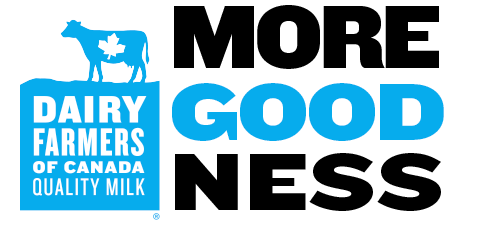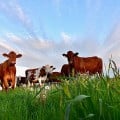
How to Reduce Dairy Emissions
Dairy Farmers of Canada has committed to working towards reaching net-zero greenhouse gas (GHG) emissions from milk production at the farm level by the year 2050. The organization’s commitment also includes targets related to improving measures of soil and land, water, biodiversity and energy.
Dairy’s carbon footprint in the Canadian context
Farmers are citizens of this planet, and all citizens have a role to play in combatting climate change. Just like their parents and grandparents, today’s farmers have a vested interest in preserving the resources for future generations because most dairy farms are passed down from one generation to the next. Farmers have a real interest in sustaining their land for the long run as multiple generations of farmers continue to produce food on the same land.
What’s more, farmers are seeing the impacts of climate change first-hand. From droughts and floods to wildfires and storms, extreme weather is having a real impact at the farm-level. There are many ways farmers can help the environment that are also good for business, good for the animals and good for the planet, ideally producing food in a way that respects the local and planetary boundaries. Building resilience and protecting soil health are therefore top priorities for Canadian farmers1.
Canadian dairy farmers strive to continually improve efficiency and to innovate to ensure the viability of their farm. The carbon footprint of a litre of milk is smaller as a result, but progress may not always be linear in time. Indeed, nature offers no guarantees: and a changing climate and extreme climate events (drought, storms, other) can have unpredictable impact on crops, animals, and the natural landscape.
Today, dairy cows in Canada represent around 1% of our country's total greenhouse gas (GHG) emissions, according to the National Inventory Report2, published annually by Environment and Climate Change Canada. The same report in 2021 estimates that all agricultural activity in Canada (crop and animal production) makes up about 8 to 10% of Canada's emissions depending on the year. The bigger shares of the pie include the transportation sector with 28%, while energy combustion represents about 45% of Canada's carbon footprint. Industrial processes, waste and other various sources make up the balance. 2
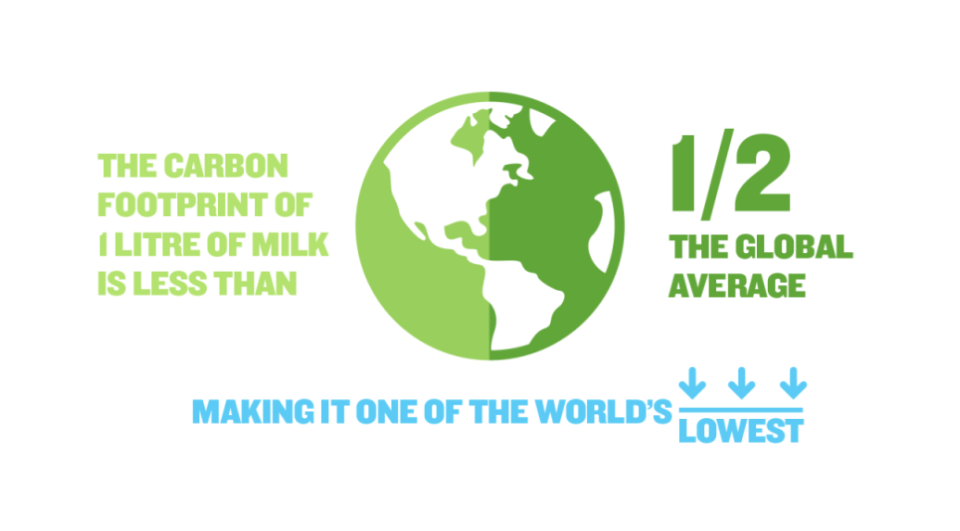
Canadian milk vs the global average for milk
Today, the carbon footprint of one litre of Canadian milk is less than half the global average carbon footprint of a litre of milk. The Canadian dairy farming sector already has one of the lowest environmental footprints among its peers in the world. Various scientific comparisons of life cycle analyses by the FAO show emissions from milk production in Canada are among the lowest in the world, similar to producing milk in countries like the U.S., France, and New Zealand. 3 The sector is committed to building on this progress, for the future resilience of Canadian farms and the health of our planet.
What 'net-zero emissions' really means
Reaching net-zero emissions means achieving an overall balance between the greenhouse gas (GHG) emissions that contribute to climate change (including carbon dioxide, methane, and nitrous oxide) and GHG removals. The idea for dairy farms is to reduce emissions at the farm level as much as possible, prevent more emissions and offset the remainder with carbon sinks or credits, bringing total farm emissions to net zero. In other words, the sector’s remaining emissions would then be equivalent to the carbon sinks or credits of the sector.
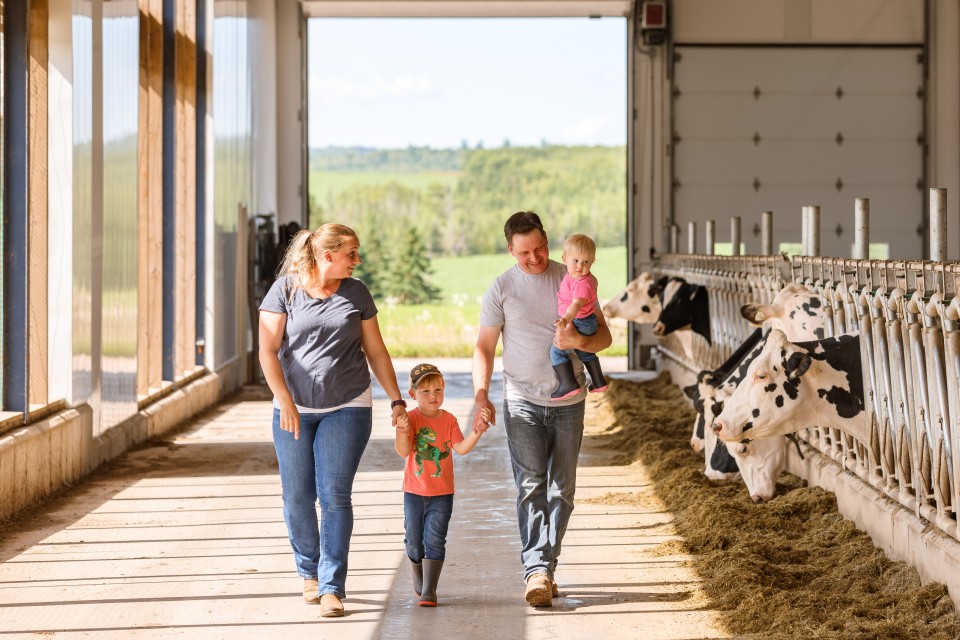
Actions Canadian dairy farmers can take on emissions
A combination of emissions reduction and carbon removal, commonly referred to as carbon sequestration are proposed to farmers to turn the dial and make dairy farming less carbon intensive over time.
Consultations with environmental experts show the goal of net zero emission by 2050 for the Canadian dairy farm sector overall is ambitious, but realistic and achievable. There has already been progress on farms over time. For example, many farms in Canada have already reduced emissions through the adoption of various technologies and management practices that make farming more efficient. Some farms have adopted technologies to prevent emissions by converting manure into renewable energy, while others have adopted wind or solar power. Reducing or eliminating tilling where possible also contributes to keeping carbon in the soil instead of it being released in the air.
Sequestration activities also include crop and tree planting which help to capture carbon from the atmosphere and bring it back into the soil or plants. Producing food is cycling carbon, as well as nitrogen and water, from the air to soil to plants. Perennial plants and trees offer a higher carbon sequestration potential than annual crops and are sometimes included in a category of solutions called “nature-based solutions.” The balance between emissions and removals across farms in general is the goal here, and every little bit helps.
But more can be done, like incentives for farmers to further understand where they can reduce emissions, choose lower-carbon options for energy and/or sequester carbon in the soil. Many actions can be taken – and in many cases, are already being taken – on the farm to reduce, capture and offset GHG emissions, and make progress over time. Tools that accurately measure, monitor, report and verify emissions reductions are also needed, however. Some tools already exist or are in development and training will be needed for farmers to take full advantage of these tools and actions. As new technologies become more accessible over time, the potential for recommendation, and adoption of measurement tools on farms will increase.
Laying the roadmap
DFC has committed to deliver a Strategy to net-zero emissions, called Dairy Farming Forward to 2050. 4 Farmers are already contributing information on the initiatives they take to protect the environment via the Environment module of proAction.
DFC will work to encourage the adoption of effective and impactful farming practices to reduce emissions and offer other environmental benefits, many of which are presented in the Net Zero by 2050: Best Management Practices Guide to Mitigate Emissions on Dairy Farms.5 A range of tools and resources will be developed to help farmers implement the strategies most suited to their operations and geographical location. For instance, training opportunities, funding opportunities, studies, and programs from governments6 and other stakeholders can be leveraged to support such initiatives. A Sustainability Advisory Group continues to advise DFC on the useful advice and guidance for farmers.
DFC will also continue to lean on partnerships with other like-minded organizations to help drive uptake of initiatives on farms. Organizations like Cleanfarms, Tree Canada, and Ducks Unlimited Canada make it easier for farmers to recycle plastic, protect waterways, and promote biodiversity.
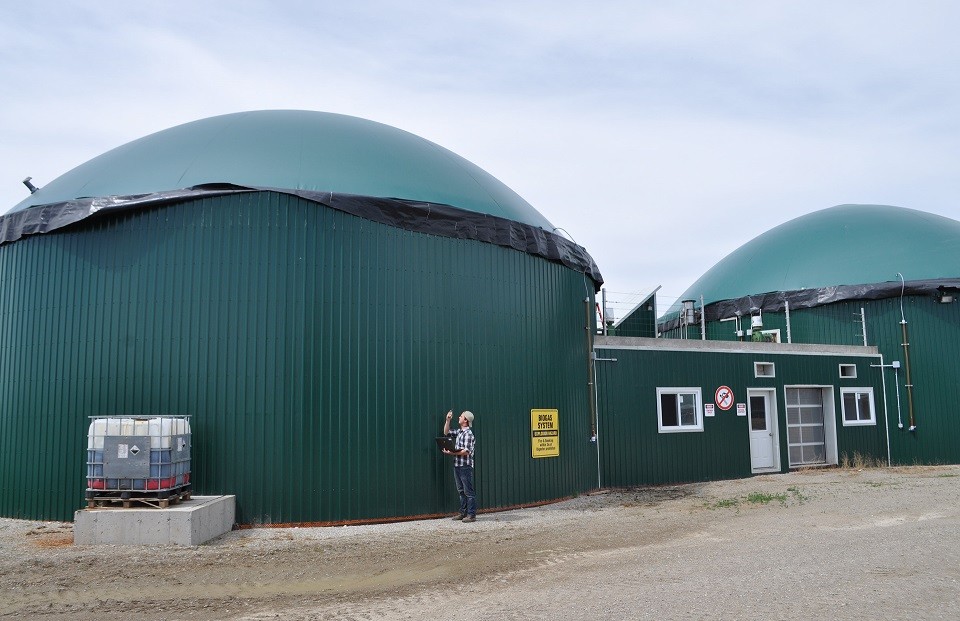
Various carbon reduction initiatives or opportunities
The Canadian dairy sector’s investments in research 7 help guide and drive meaningful progress to lower dairy’s carbon footprint over time, while building farm resilience to risks and consequences of a changing climate8. Here are a few strategies or future opportunities that will help reduce emission intensity on farms that can be found in the Best Management Practices Guide.
Biodigesters: Emissions from manure can be reduced through a process called anaerobic digestion. This results in organic fertilizer and renewable energy. A biodigester on a typical farm can produce enough electricity for 11 houses.
Manure Management: cow manure is an abundant source of natural fertilizer. Choosing a good manure storing and management system, and testing soils help make the best use of it in fields. Cow manure favours microbial activity in the soil and reduces the need for petroleum-based fertilizers. Other practices, such as fully emptying manure storage and covering liquid manure with straw, can also significantly reduce methane emissions in warm weather.
Renewable Energy: Anaerobic digesters produce a form of renewable energy. Many farmers report they are installing solar panels or wind turbines on their land to take advantage of these elements.
Improved Animal Feeding: Research has been underway into various feeding strategies for decades to understand how and why ruminants emit methane during digestion, and how these emissions can be reduced.
Breeding Strategies: selectively breeding cows who process feed more efficiently, are more robust, and other optimal sustainable genetic progress.
Carbon Sequestration: Canadian farms, with their crops, grasses, and woodland, offer a part of the climate solutions, as natural spaces actively sequester carbon from the atmosphere into the soil, during photosynthesis by plants. These plants support animals and various life forms in the local ecosystem.
Reduced Tillage: Many farms practice reduced tillage or no-till in their fields, which leaves stubble and roots of a previous year’s crop in the soil, helping capture more carbon and nutrients in the ground and reducing the risk of topsoil erosion.
Crop Rotations: Diverse and strategic crop rotations lead to better soil health, help the soil retains more water (requiring less irrigation), more nutrients (requiring less fertilizer), and more carbon (increasing microscopic life in the soil).
Cover crops: This is a secondary crop in the fields which may be planted after the main crop is harvested. A cover crop can help minimize potential soil erosion, increase soil fertility and moisture, and control against weeds, pests, and plant diseases – all while supporting biodiversity.

The role of supply management in sustainability
Sustainability should not have to come at the expense of a farmer’s economic standing or the price of milk for consumers. Under supply management, dairy farmers work collectively to align production to meet the needs of the Canadian market. The system was established in Canada in the 1960s to manage market volatility, to ensure a fair return for farmers while meeting domestic demand. An efficient alignment of supply and demand helps avoid overproduction or waste of resources, helping the sector be more sustainably efficient – something the sector strives for.
Sources
(1) Farmers of Climate Solutions. 2024. Producer Perceptions of Environmental Sustainability and Climate Change. https://farmersforclimatesolutions.ca/2024-poll
(2) Environment and Climate Change Canada. Greenhouse gas sources and sinks: executive summary 2021.
(3) Food and Agriculture Organization.2019. Climate change and the global dairy cattle sector. http://www.fao.org/3/CA2929EN/ca2929en.pdf
(4) Dairy Farmers of Canada. 2022. Dairy Farming Forward to 2050, https://dairyfarmersofcanada.ca/sites/default/files/2023-03/DFC_Net-Zero%20Strategy_FINAL_WEB.pdf
(5) DFC, 2022. Net Zero by 2050: Best Management Practices Guide to Mitigate Emissions on Dairy Farms,
(6) Agriculture and Agri-Food Canada, Environment and sustainability in agriculture. https://agriculture.canada.ca/en/environment
(7) DFC, Dairy Research – Environmental Sustainability. https://dairyfarmersofcanada.ca/en/dairy-research/research-projects/environmental-sustainability
(8) Laforge J & al. 2021. Farming the Future: Agriculture and climate change on the Canadian Prairies. https://www.iisd.org/system/files/2021-11/farming-future-agriculture-climate-change-canadian-prairies.pdf




